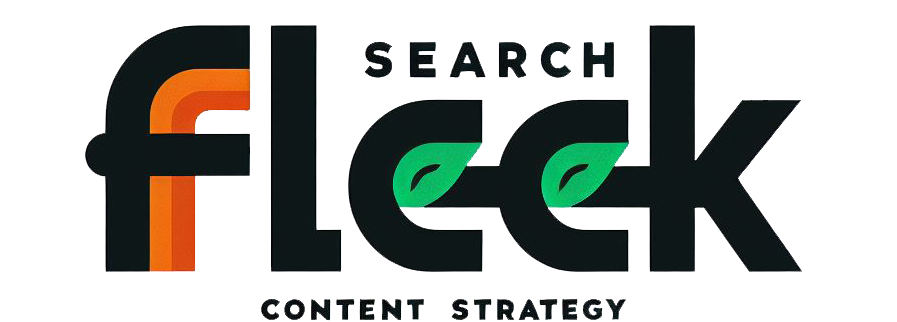In today’s digital age, educators have a powerful tool at their fingertips: the blog. Blogging allows teachers to share their expertise, connect with colleagues, and create valuable resources for students and parents. But how can you ensure your blog content goes beyond simply informing your readers and actually inspires them to take action?
This comprehensive guide dives deep into the world of teacher blogging, equipping you with the tips and strategies to craft compelling content that gets results. From setting up your blog to building a thriving online community, we’ll cover everything you need to know to transform your blog into a platform for positive change in education.
The Power of Blogging for Educators

There are numerous benefits to educators who embrace the world of blogging. Here are just a few:
Sharing Expertise and Best Practices: Blogging allows you to share your successful classroom strategies and innovative teaching methods with a wider audience of educators.
Connecting with Fellow Educators: The online world provides a platform to connect with teachers across the globe, fostering a sense of community and offering opportunities for collaboration and professional exchange.
Reflecting on Teaching Practice: The process of writing about your teaching experiences can be incredibly valuable for self-reflection and professional growth.
Providing Valuable Resources for Students and Parents: Your blog can be a treasure trove of resources for students, offering additional practice materials, study tips, and even insights into classroom expectations. Parents can also benefit from your blog, gaining a window into their child’s learning journey and discovering ways to support their education at home.
Who Should Consider Blogging?
The beauty of teacher blogging is that it’s truly open to everyone. Here are some educators who might find blogging particularly rewarding:
New and Experienced Teachers: Whether you’re just starting out or have years of experience under your belt, you have valuable insights to share. New teachers can offer fresh perspectives, while veterans can provide seasoned advice and practical classroom tips.
Subject-Specific Specialists: Do you have a passion for a particular subject? Share your in-depth knowledge and create engaging content that caters to other educators and students interested in your area of expertise.
Educational Technology Enthusiasts: Are you a tech-savvy teacher who loves exploring new learning tools and digital resources? Your blog can become a hub for all things educational technology, providing reviews, tutorials, and practical tips for integrating technology into the classroom.
Anyone Passionate About Teaching and Learning: Ultimately, the most important quality for a successful teacher blogger is a genuine passion for education. If you’re excited about sharing your knowledge and making a positive impact on learning, then blogging can be a powerful tool for you.
Overcoming Common Blogging Hurdles
Let’s be honest, teachers are busy! Here are some common challenges you might face when considering starting a blog, along with solutions to help you overcome them:
- Time Management and Workload Concerns: Creating quality content takes time and effort. The key is to be realistic and set achievable goals. Start with a manageable posting schedule, even if it’s just once a week. Utilize downtime during your breaks or weekends to write and schedule posts in advance.
- Finding Your Voice and Content Ideas: Don’t be afraid to experiment! Write about topics you’re passionate about, brainstorm with colleagues, and ask your students for feedback on what kind of content they’d find helpful.
- Building and Maintaining an Audience: Building a loyal readership takes time and consistent effort. Promote your blog on social media, engage with other educators online, and offer valuable content that keeps readers coming back for more.
Now that you’re convinced of the benefits and ready to tackle the challenges, let’s delve into the practical steps for setting up your teacher blog.
Setting Up Your Teacher Blog
Choosing a Blogging Platform:
There are numerous user-friendly blogging platforms available, each with its own advantages and disadvantages. Here are three popular options:
- WordPress: This self-hosted platform offers a high degree of customization and control over your blog’s design and functionality. However, it requires a bit more technical knowledge to set up compared to other options.
- Blogger: This free platform from Google is a great starting point for beginners. It’s easy to use, integrates seamlessly with other Google products, and offers a decent range of features. However, customization options are somewhat limited compared to self-hosted platforms like WordPress.
- Wix: This user-friendly platform offers a drag-and-drop interface that makes it easy to create visually appealing blogs. Wix offers both free and paid plans, with the free plan having some limitations on customization and storage.
Selecting a Domain Name and Hosting
- Domain Name: This is the unique address of your blog (e.g., yourname.com). Choose a name that is memorable, relevant to your teaching niche, and easy to spell and type. Ideally, your domain name should also be available as a social media handle for consistency across platforms.
- Hosting: This is the service that stores your blog’s files and makes it accessible online. Shared hosting is a cost-effective option for beginners, while dedicated hosting offers more control and resources for high-traffic blogs.
Designing Your Blog:
First impressions matter! Investing time in creating a visually appealing and user-friendly blog design will keep readers engaged and coming back for more.
Choose a Theme: Most blogging platforms offer a wide variety of themes, both free and paid. Select a theme that aligns with your overall brand and is easy to navigate for your readers.
Logo and Branding: A simple logo can help establish your brand identity and make your blog easily recognizable. You can create a logo yourself using free online tools, or hire a graphic designer for a more professional look.
Images and Visuals: High-quality images and infographics can significantly enhance your blog’s visual appeal and break up text-heavy content. Use royalty-free images or create your own visuals using tools like Canva.
Essential Blog Pages:
In addition to your main blog posts, there are some essential pages your blog should have:
- About Me: Introduce yourself, your teaching background, and your passion for education. This page allows readers to connect with you on a personal level.
- Contact: Provide an easy way for readers to reach you with questions or comments. Include your email address or a contact form.
- Categories: Organize your blog posts into relevant categories to make it easier for readers to find the content they’re interested in.
Now that you have a beautiful and functional blog set up, let’s dive into the heart of the matter: creating content that gets results!
Content Creation for Teacher Bloggers

The key to a successful teacher blog is consistently providing engaging and informative content that resonates with your target audience. Here’s how to craft compelling blog posts that inspire action:
Finding Engaging Blog Topics:
There’s a whole world of potential blog topics waiting to be explored! Here are some ideas to get you started:
Leverage Your Classroom Experiences: Share successful lesson plans, innovative teaching strategies, and classroom management tips you’ve developed.
Address Common Student Challenges and Parent Concerns: Offer practical advice on topics like study skills, homework motivation, or dealing with test anxiety. This can be incredibly valuable for both students and parents.
Explore Trends in Education and Technology: Stay up-to-date on the latest educational trends and integrate them into your blog content. Review new educational technology tools and share your experiences with integrating them into the classroom.
Respond to Current Events and Educational Debates: Offer your unique perspective on current educational issues and engage your readers in meaningful discussions.
Crafting High-Quality Blog Posts:
Here are some essential tips for writing compelling blog posts:
Clarity and Concision: Write in a clear, concise, and engaging style that is easy for your readers to understand. Avoid educational jargon and use short sentences for better readability.
Storytelling and Engagement: Weave stories, anecdotes, and humor into your posts to keep readers engaged. Sharing personal experiences can make your content more relatable and connect with your audience on a deeper level.
Evidence and Data: Don’t just tell, show! Back up your ideas with research, data, or case studies to add credibility and authority to your content.
SEO Optimization: Search Engine Optimization (SEO) helps your blog rank higher in search engine results pages, making it more visible to potential readers. While you shouldn’t stuff your content with keywords, incorporate relevant keywords naturally throughout your posts for better search engine visibility.
Beyond Text: Utilizing Multimedia Content:
Text is great, but multimedia content can take your blog posts to the next level:
Embedding Videos and Images: Embed engaging videos, relevant infographics, and high-quality images to break up text-heavy content and visually represent your ideas.
Creating Podcasts or Educational Video Series: Consider exploring audio or video formats. Podcasts are a great way to offer in-depth discussions on educational topics, while video series can showcase your teaching style and classroom practices.
Different Content Formats to Consider:
- Lesson Plans and Teaching Resources: Share your well-tested lesson plans, classroom activities, and other teaching resources with your readers. This can be a valuable resource for both new and experienced educators.
- Book Reviews and Educational Product Recommendations: Review educational books, apps, or other learning tools. Offer honest evaluations and highlight their potential benefits for teachers and students.
- Guest Posts from Other Educators and Experts: Invite other educators or experts in your field to contribute guest posts on your blog. This can provide your readers with fresh perspectives and broaden the reach of your blog.
- Interviews with Prominent Figures in Education: Reach out to educational leaders, authors, or curriculum developers for interviews. This can add prestige to your blog and offer valuable insights to your readers.
By incorporating these strategies, you can create a diverse and engaging blog that caters to the needs of your audience. But a successful blog is about more than just great content; it’s about building a community around your ideas.
Building Your Audience and Community
Engaging with your readers and fostering a sense of community around your blog is crucial for long-term success. Here are some ways to achieve this:
Promoting Your Blog on Social Media:
- Share strategically: Share your blog posts on relevant Facebook groups, Twitter threads, and educational forums. Use relevant hashtags to increase discoverability.
- Eye-catching visuals: Create eye-catching graphics to promote your content on social media. This will grab attention and entice users to click through to your blog.
- Engage in conversations: Don’t just post and disappear! Respond to comments, participate in conversations, and actively engage with your audience on social media.
Building Relationships with Other Bloggers:
- Guest Posting: Reach out to other educational blogs and offer to write guest posts. This is a great way to expand your reach and connect with a wider audience.
- Online Communities: Participate in online communities and discussions relevant to your niche. Offer your expertise, share your blog content, and connect with other educators.
- Collaboration: Consider collaborating with other teacher bloggers on projects, interviews, or even joint blog posts. This can be a fun and rewarding way to expand your network and reach.
Encouraging Reader Engagement:
- Respond to comments: Make your readers feel heard! Respond to comments on your blog posts and social media channels. This fosters a sense of community and encourages further discussion.
- Interactive activities: Host Q&A sessions, polls, or other interactive activities on your blog. This is a great way to learn more about your audience and keep them engaged.
- Free resources: Offer valuable free resources to your readers, such as printables, templates, or downloadable guides. This not only adds value but also encourages readers to subscribe to your blog for future updates.
Leveraging Email Marketing:
Building an email list allows you to stay connected with your readers and deliver targeted updates and announcements.
- Email signup form: Add a clear and easy-to-use email signup form to your blog. Offer an incentive for signing up, such as access to exclusive content or discounts.
- Engaging newsletters: Create engaging newsletters that provide valuable content and keep your readers informed about your latest blog posts.
By implementing these strategies, you can build a thriving online community around your blog, foster meaningful connections with your readers, and ultimately amplify the impact of your content.
Measuring Success and Maintaining Motivation
So, you’ve put in the hard work of creating great content and building your audience. But how do you know if your blog is actually making a difference?
Tracking Your Blog’s Analytics:
Most blogging platforms offer analytics tools that provide valuable insights into your blog’s performance. Here are some key metrics to track:
- Audience Demographics: Understanding the demographics of your audience (age, location, interests) helps you tailor your content to their needs.
- Engagement Metrics: Track metrics like page views, comments, and social media shares to gauge reader engagement and identify your most popular content.
- Traffic Sources: See where your blog traffic is coming from (search engines, social media, etc.) to understand which promotional strategies are most effective.
By analyzing your blog’s performance, you can identify areas for improvement and make data-driven decisions to optimize your content and reach a wider audience.
Overcoming Blogging Burnout:
Even the most passionate blogger can experience burnout. Here are some tips to keep yourself motivated:
- Realistic Goals: Don’t try to do too much too soon. Start with a manageable schedule and gradually increase your posting frequency as you get comfortable.
- Inspiration from Others: Feeling uninspired? Find inspiration from other successful teacher bloggers. Read their content, participate in online communities, and learn from their experiences.
- Breaks and Recharge: Don’t neglect your well-being! Take breaks when needed and recharge your creativity. Stepping away for a while can help you return to your blog with fresh ideas and renewed energy.
Remember, blogging is a marathon, not a sprint. By setting realistic goals, staying inspired, and taking care of yourself, you can maintain your motivation and ensure your blog thrives in the long run.
Conclusion
The world of teacher blogging offers a wealth of opportunities for educators to share their expertise, connect with colleagues, and create a positive impact on education.
By following the tips and strategies outlined in this guide, you can transform your blog into a powerful platform for professional growth, community building, and ultimately, making a difference in the lives of your students and the teaching profession as a whole.
So, what are you waiting for? Start your teacher blog today and embark on a rewarding journey of sharing your passion for education with the world!
Emon Anam, CEO of Search Fleek, isn't your typical digital guru. He brings a unique blend of financial expertise (former banking pro!) and digital marketing mastery to the table. A self-proclaimed "SEO Sherlock Holmes," Emon unlocks content secrets for local businesses and SaaS companies. But beyond the keyboard, he's a devoted family man, music enthusiast, and cricket champion. Let Emon weave your digital success story!
AI Writing Disclaimer
This post was initially researched and outlined by me. The content was then generated by an AI language model using the provided information. The final text has been reviewed and edited by me for accuracy and clarity.




